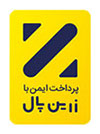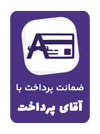Glossaries
The variety of English used in schools, textbooks, and many business and government transactions.
Vocabulary words that students use when speaking or writing as opposed to receptive vocabulary which are the words that students understand when used by others.
Bilingual program that promotes the development and retention of students’ first language as they learn a second language.
the affective filter may interfere with language acquisition because it involves public practice and speaking in front of others. The risk involved in public practice can produce anxiety that blocks the learner’s ability to process new information. To counteract the affective filter, teachers can create an effective learning environment for ELLs that helps them integrate into their new school environment (e.g., provide a nonthreatening classroom experience and demonstrate to ELLs that their needs are understood.)
an excessive irrational fear of being in open or unfamiliar places resulting in the avoidance of public situations from which escape may be difficult such as standing in line or being in a crowd.
Synonyms: prior knowledge
this term refers to the background experience and knowledge that students bring to the classroom.
Near native-like knowledge of two cultures. Includes the ability to respond effectively in two cultures.
Teachers are licensed in a content area with bilingual endorsement. ELL students receive cores curriculum instruction in L1, while developing English language skills in other classes.
Associate Educator, Aide): ESL staff who collaborate with licensed staff, support ESL students with minimal supervision, and assists with second language and second culture families as needed.
(Community Outreach Liaison): Serves as a communication link to ESL families and communities under the supervision of licensed staff.
Instructs in a content area using both English and students’ native language. A bilingual endorsement as well as a content area license are required.

 Persian
Persian  English
English  Arabic
Arabic 



